Dusk Walk, Saturday 3rd September 2022
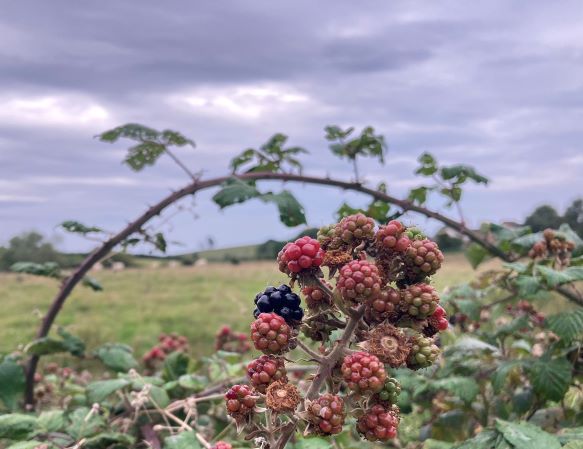
A fruit-full walk, despite the rain
The summer warmth was very much still with us, but the glowering skies and ripening fruits were clear indicators that autumn is inexorably on its way, and we soon had a short-lived dousing of rain.
The beauty of Fairfield Nature Reserve is ever-changing and no two walks there are ever the same. This is what I love most about being out in nature, you never know what you are going to see.
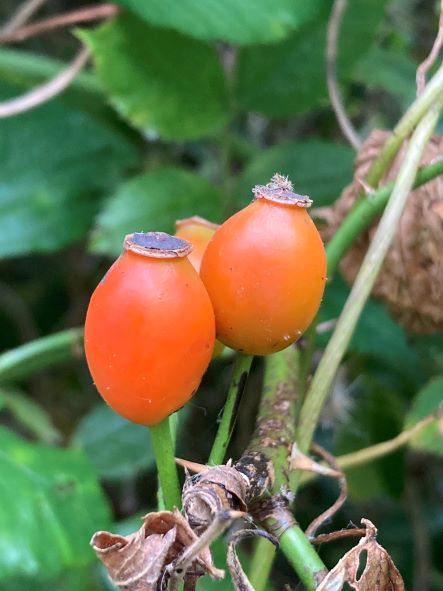
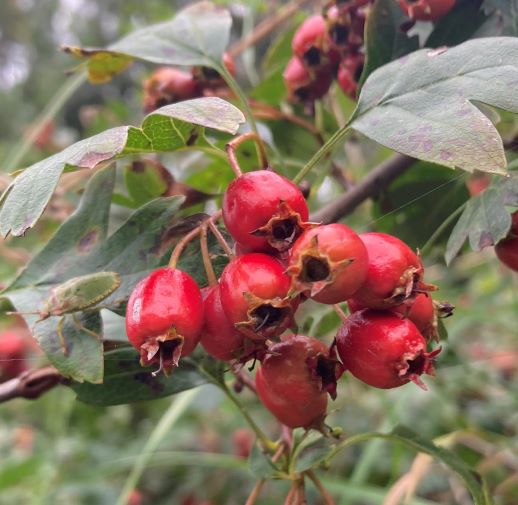
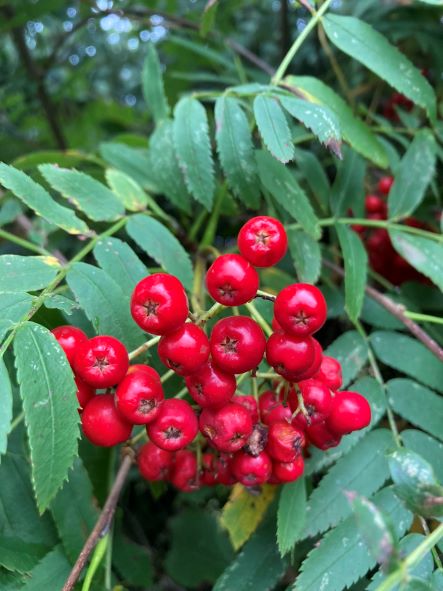
Fruits galore
It is pretty quiet right now for birdlife, but the fruits are abundant. We started off by doing a comparison of some of the main red fruits of the season, looking at size, colour, shape and appearance on the plant.
The berries of the Rowan or Mountain Ash (Sorbus aucuparia) are an important food source in the autumn for many thrush species (Blackbird, Song Thrush, Mistle Thrush, Fieldfare and Redwing). They are also edible to humans (although very sour) and are often used to make jam or jelly.
The trees were said to ward off witches as well, which might explain why so many are found in parks and gardens (although that might also have something to do with how they are distributed!).
Poetry corner
We paused for a little while after we’d walked through the orchard, and I read a poem which has become quite a favourite of mine: ‘The Song Thrush and the Mountain Ash‘ by Simon Armitage. It was written as a song for a choir who had lost several members to COVID, and had been apart for some time. Very moving.
Arachnophobes beware… spiders below!
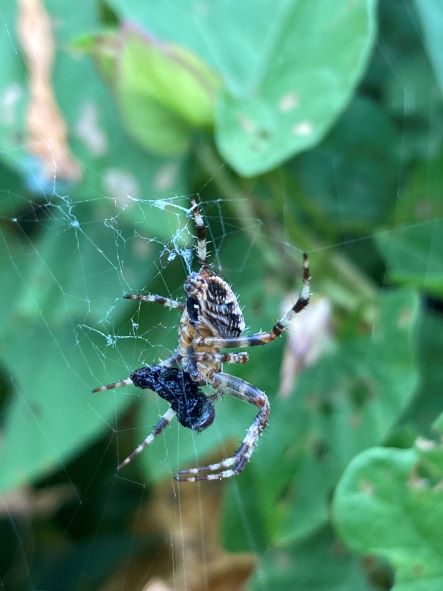
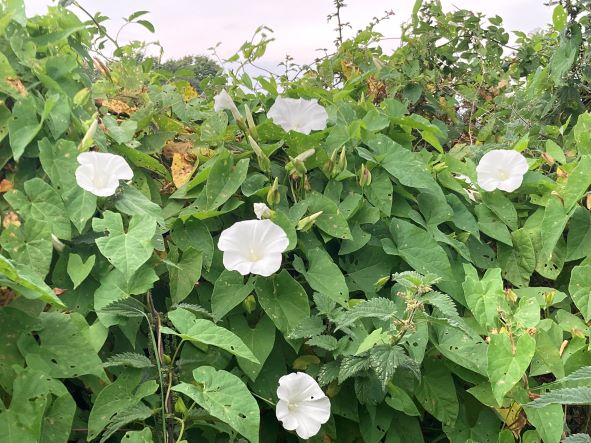
Moving on to the lane which leads up to Pony Wood, we noticed that spiders are suddenly a lot more visible. This is another sign of late summer that I was aware of, but unable to answer at the time, so here’s a fuller explanation.
Firstly, spiders are looking for mates at this time of year. In the case of the garden spider above, the males and females mature late in August/early in September and it is only the females that make the classic spoked webs. The males move around in search of them for mating.
Secondly, young spiders are dispersing. Have you ever noticed the long strands of spider silk in a field in the early-morning golden light of autumn? That is from a trait known a ‘ballooning’ where the young spiders let out long lengths of silk and wait for the wind to catch it, enabling them to move vast distances. This is most common in the money-spider family in the UK.
The last few flowers of summer… and many seed-heads
There are still some flowers out for the still-busy Tree bumblebees, including a profusion of Hedge Bindweed (Calystegia sepium) and a few Red Campion (Silene dioica). The latter species has seed-heads which look very similar to those of poppies, and the colour and size of the seeds are near-identical. Apparently the seeds were traditionally used to treat snakebites!
More noticeable, though, were the large numbers of seed-heads. I particularly love those of the Rosebay Willowherb (Chamaenerion angustifolium) and Great Willowherb (Epilobium hirsuitum), where the heads ‘unzip’ as they ripen, disgorging multitudes of seeds on fluffy clouds of plumed hairs.
Creeping Thistle (Circium arvense) is also abundant, particularly around Pony Wood and it’s method of seed dispersal is typical of other plants in the daisy family, of which it is a member.
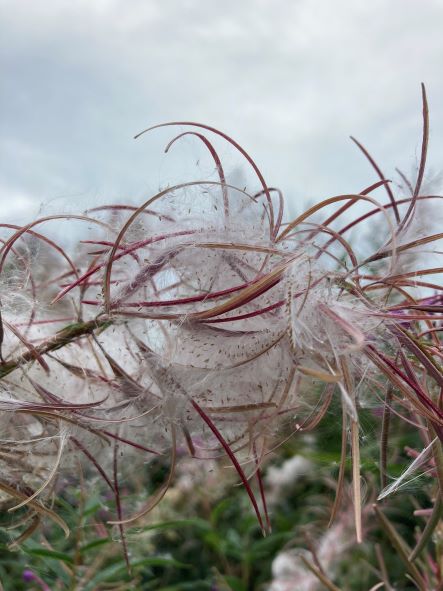
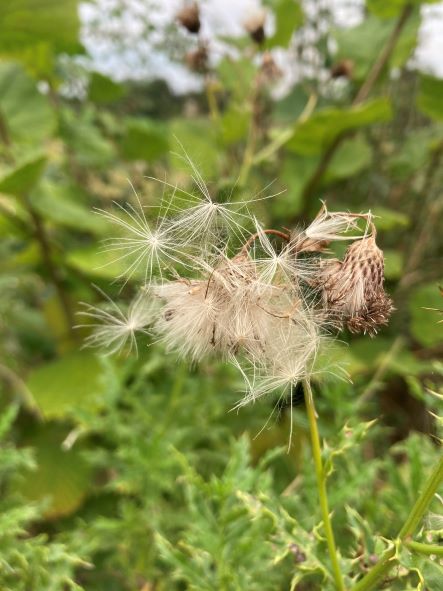
We walked on up through Pony Wood, enjoying the diversity of trees as we went, and finished up the walk at the canal, just as the darkening clouds presaged an early dusk.
Ros Jones, September 2022
References / Further reading
Rowan trees, The Woodland Trust: https://www.woodlandtrust.org.uk/trees-woods-and-wildlife/british-trees/a-z-of-british-trees/rowan/
Flying spiders, The British Arachnological Society: https://www.britishspiders.org.uk/flying-spiders
Garden Spider (and other British species) factsheet, The British Arachnological Society: https://www.britishspiders.org.uk/factsheets
Red campion, The Woodland Trust: https://www.woodlandtrust.org.uk/trees-woods-and-wildlife/plants/wild-flowers/red-campion/
